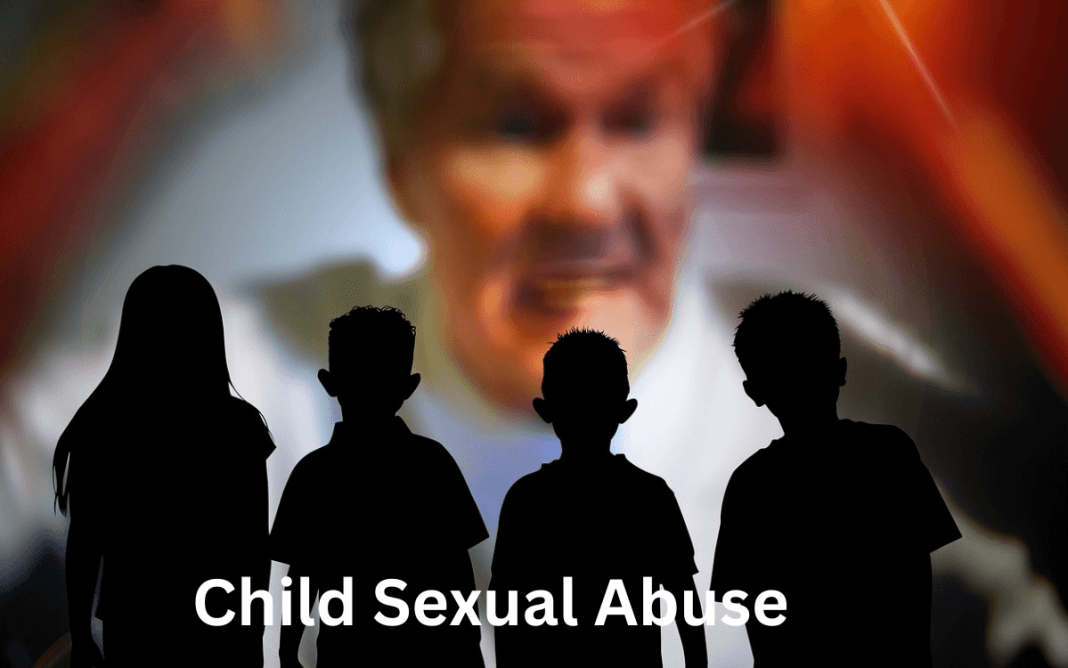Baltimore Child Sexual Abuse Revelations, Highlight the Critical Need for Preventative Measures.
What is Child Sexual Abuse?
Child sexual abuse occurs when an adult has sexual contact with a minor. A minor cannot provide informed consent to sexual conduct of any kind. A criminal who interacts with a youngster in this way has committed a crime that can have far-reaching consequences.
Sexual abuse of a kid can occur without there being any physical contact between the abuser and the child. Sexual abuse in children has some types, including but not limited to the following:
- Exhibiting oneself to a minor (also known as “exhibitionism”)
- Fondling
- Intercourse
- Conscious or coerced masturbation in the presence of a minor
- Indecent talk over the phone, texting, or online interaction
- Making, possessing, or distributing child pornographic media
- Sexual contact of any kind with a minor is forbidden.
- Human sex trade
- Any other sexually suggestive interaction between a juvenile and an adult.
What About the Worse Effects of Pornography
Various Forms of Child Sexual Abuse
Sexual abuse of children can either involve physical contact or be non-physical. When we talk about “touching,” we’re referring to everything from touching a child’s genitalia to playing sexual games with them or inserting things into their vulva or vagina, mouth, or anus for sexual enjoyment.
A child can be sexually abused in non-physical ways by being exposed to pornography, having their genitalia exposed, being sold into prostitution or trafficking, being photographed while making sexual positions, being coaxed into witnessing or listening to sexual actions, etc., and/or being forced to watch another child undress or use the restroom.
One-quarter of males and one-third of women report experiencing physical sexual violence, according to the CDC. These estimates are likely to be low because sexual abuse is underreported and because they only account for one of the five categories of sexual abuse.
Many of the persons we work with who are overcoming the effects of sexual assault are unwilling to disclose the abuse or have not done so. To start the road to healing, one must accept that abuse occurs even if no physical contact is made.
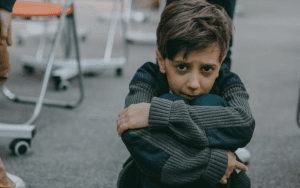

Verbal
The use of verbal or written language to communicate, provoke, or imply sexual content is verbal sexual abuse. Verbal sexual abuse is common and can happen anywhere, including at home, at work, or in a social context.
In our society, crude jokes are typically tolerated despite the harm they do. It’s challenging to cope with since we may sense a violation yet be afraid to speak up for fear of social or relationship repercussions.
Sexual jokes, teasing about physical attributes, explicit sexual descriptions, name-calling, remarks on physical growth, solicitation, unwelcome romantic approaches, sexting, and stalking via phone calls or other messaging are all examples of verbal sexual abuse.
Covert
Sexual abuse may happen in secret, even if you don’t suspect it. Observation, following, photography, social media stalking, and sexual harassment all fall under this category. The perpetrator of this type of abuse will often try to gratify his or her own sexual needs at the expense of the victim.
Visual
Sexually charged or obscene imagery permeates our culture. Sexual abuse includes being forced to see explicit sexual content. Sexting, airdropping, exhibitionism, flashing, home nudity or unsuitable clothing, and performing sexual behaviors in front of a non-consenting individual are all forms of Visual Sexual Abuse.
Physical
Non-consensual acts of physical or sexual contact, such as those described above, as well as physical restraint, cornering, tickling, kissing, excessive washing of genitalia, enemas, intercourse, sodomy, oral sex, licking, brushing up against, urinating on, breach of privacy, and stalking, all fall under the category of physical or sexual abuse.
Power imbalances significantly increase the risk of sexual abuse; therefore, a passive response such as “Okay, fine.” or “No” does not rule out the possibility of sexual abuse. This is because it is possible to exert pressure on someone to act without really saying anything threatening or threatening.
Ritualistic
Sexual abuse that incorporates rituals and the occult is called ritualistic sexual abuse. Some forms of ritual sexual abuse involve the abuser encouraging or attempting to explain the abuse by portraying it as an act of penance or worship towards the victim.
Child marriage, incest rituals, genital mutilation, and the use of chants or incantations during abuse all fall under this category.
Barriers for People With Disabilities in the U.S: Socioeconomic Problems
Recognizing the Indicators of Sexual Abuse in Children and Adolescents
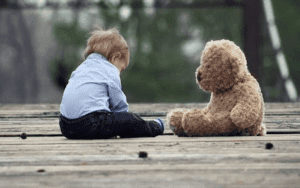

Different children react in different ways to sexual abuse. The age of the kid, the frequency and severity of the abuse, the events that take place during the abuse, and the identity of the perpetrator are just a few of the factors that affect the child’s reaction.
It’s possible that a child who has been sexually abused will not come forward. Instead, you may observe symptoms, both outward and internal, such as shifts in a child’s behavior or emotional state. There may be no symptoms at all, or they may be extremely mild in some youngsters.
Your child may have endured sexual abuse even if they exhibit one or more of the following symptoms. Your child’s behavior may alter for a variety of reasons, but one of the most serious is sexual abuse.
You should also follow your gut and keep in mind that the persons closest to you and your child are the ones who are most likely to engage in sexual abuse.
Identifying Sexual Abuse in Children Aged 0-11 Years
Emotional Shifts
- Acts frightened or display symptoms of anxiety, sadness, or adolescent depression.
- seems further away or quieter than usual,
- shouts out for no discernible cause,
- becomes a bed-wetter or a soiled-pants
- Concerns itself with issues such as “Do people have to keep secrets?”
- displays hostile behavior or unjustified anger
- Claims they’re experiencing inexplicable pain in their body (such as in their head or stomach)
- begins experiencing recurring nightmares
- Possessive and possessive.
Alterations in Conduct
As a parent, you may have noticed your child:
- doesn’t want to play, doesn’t want to interact with specific individuals, or
- misbehaves in a sexual way
- is having trouble falling asleep
- eating more than average, less than usual, or not changing weight
- is performing poorly academically
- is hesitant to take care of his or her own hygiene
- Becomes more childlike in their behavior.
As a parent, you may have noticed your child has:
- Symptoms such as genital redness or oedema
- discomfort while using the restroom
- Having trouble standing or sitting
- bruises on their soft parts (buttocks, thighs, etc.)
- Sexually transmitted disease symptoms, such as penile or vaginal discharge.
- symptoms of a UTI, such discomfort during or after urination
Climate Change is a Fraud? What is Climate Change? Factors, Effects, Solutions
Warning Signals For Sexual Abuse in Teen Ages
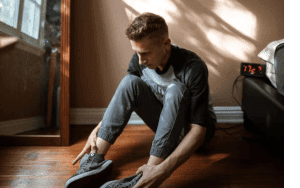

Emotional Shifts
Some signs that your child or the child in your care has been sexually abused are when they exhibit:
- appears hostile or furious with no cause at all
- suffers from recurrent, unexplained gastrointestinal or head pain
- Reacts negatively when a specific name or location is brought up
- having a hard time getting along with others or keeping them
- shouts out for no discernible cause
- having recurring nightmares
- lacks confidence
- displays symptoms of adolescent emotional distress such as withdrawal or fear
- They are struggling with figuring out their sexuality.
Alterations in Conduct
As a parent, you may have noticed your child:
- is adopting a new style of clothes
- has secondhand items such as clothes, shoes, purses, jewelry, or electronics
- displays negative sexual behavior, such as engaging in sexually dangerous activities
- is engaging in risky behaviors (such as consuming substances, inflicting harm to others, or hurting oneself),
- is engaging in reckless driving
- has a mysterious online life and appears to spend a lot of time online
- is putting on or losing weight
- Sleeps poorly or has trouble falling asleep.
Alterations to Academics and Social Activities
As a parent, you may have noticed your child:
- is being more alone than normal
- has altered their social circles
- involves staying away from specific gatherings, such as a friend’s residence or a sports team
- Is avoiding things they used to like doing or asking queries like “Do I have to go to music today?”
- Needs to catch up academically.
What is Left-Wing Violence in The United States, and How?
Who Are the Most Vulnerable Children to Sexual Abuse?
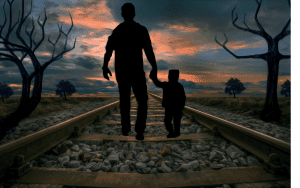

Thousands of youngsters in the United States fall prey to sexual abuse every year. About one in ten Missouri children may experience sexual abuse before they are eighteen, says Kids First.
Sexual abuse of a youngster can come from anybody, including doctors, coaches, teachers, acquaintances, and even relatives. While sexual abuse can happen to any kid, there are definitely kids who are more likely to be victims than others.
Young Ladies and Girls
According to studies on the topic, sexual abuse of female children is more widespread than sexual abuse of male children. Darkness to Light (D2L) estimates that 1 in 7 girls and 1 in 25 boys may experience sexual assault before the age of 18. The danger of sexual abuse and assault is higher for guys who did not comply with gender standards as children, according to studies.
LGBTQ+ Youth
There is a disproportionate amount of sexual abuse that occurs among young individuals who identify as lesbian, gay, bisexual, transgender, or queer. D2L found that the prevalence of sexual abuse among gay, lesbian, and bisexual kids was nearly four times that among heterosexual youth.
Twenty-five percent of transgender children and teens experience sexual abuse before they become eighteen. Since cisgender girls and boys aren’t exposed to this danger, transgender people are. In addition, 18% of LGBTQ+ youth said they were coerced into having sex.
Kids Who Can’t Walk or Talk
It is more likely that a child with a mental or physical disability may be sexually abused. D2L reports that they are three to eight times more likely to be sexually assaulted than their non-disabled classmates. This is due to the fact that young kids are highly defenseless and reliant on the care of adults.
Children with impairments may be unable to protect themselves against sexual assault on several fronts: physical, mental, and linguistic. This makes individuals vulnerable to sexual assault from a variety of sources, including healthcare workers, therapists, students, and even members of their own families.
Food Deficiency in Future: Is There a Basil Shortage in the US ?
Kids in Foster Care


The likelihood of sexual abuse increases for children in the foster care system. Four times as many children in foster care were sexually abused as their peers who did not live in institutional care.
While those living in group homes had a whopping 28 times higher chance. Children in need frequently fall through the gaps of the foster care system, which is severely dysfunctional.
It’s possible, for instance, that a county won’t do enough child welfare inspections or that it won’t evaluate prospective foster parents well enough. Foster care abuse victims who don’t have somebody to talk to about their experiences frequently internalize their pain.
Children Living Alone
All children are vulnerable to sexual assault, but foster children are more in danger when they feel alone. Kids are more susceptible to abuse when they are cut off from support systems like parents, friends, and authorities.
Children at places like boarding schools, military academies, sleepaway camps, summer leagues, and pediatricians’ offices are all excellent examples. A youngster is in danger of grooming or sexual abuse each time he or she is alone with an adult.
Tense Situation at Home
Children who lack faith in their homes and communities are easy prey for adults who offer them security and stability, even if those promises come with adverse side effects. Children experiencing stress at home may also worry that their parents will not be able to provide a supportive ear if they try to confide in them.
Confidence Issues
Children with poor self-esteem are more at risk because they have a greater need for social approval. Particularly affected are kids who have been bullied or whose parents have poor self-esteem.
Those who provide praise presents, and special treatment to children with poor self-esteem are more likely to win their affection. A youngster may only appreciate the significance of limits, consideration, and permission if he or she feels valued.
Unmonitored Technology Availability
Educating, inspiring, and communicating with your child has never been easier than with today’s technology. The dark side of technology is that it may be used to commit crimes.
They can remain anonymous, conduct their operations in secret, and access a far larger pool of possible victims, all thanks to the Internet. Your home’s phones, tablets, and computers can serve as entry points for an offender to communicate with your child.
These tools not only allow a predator to access more victims, but they also eliminate obstacles to victimization (such as being unable to isolate a child or send them improper content).
Ineffective Interaction
Suppose a child doesn’t feel safe talking to their parents about anything. In that case, they may become withdrawn, lonely, and vulnerable to grooming. They are less inclined to speak openly with their parents about sensitive issues like dealing with unfamiliar individuals, witnessing or experiencing improper behavior, or going through puberty.
A youngster who has trouble expressing themselves to their parents is more likely to keep the occurrence of sexual abuse hidden. They may be afraid of being punished, ridiculed, causing their parents too much difficulty, or being ignored.
Tips for Keeping Seniors Safe From Scammers
Effects: What Repercussions Does Sexual Abuse of Children Have?


Sexually abused children and adolescents can have a wide range of immediate and long-term psychological and behavioral difficulties.
Depending on the severity of the abuse and the child’s age, sexual assault can have a wide range of psychological and behavioral consequences.
Sexual abuse of children and adolescents can alter a person’s sense of themselves, their community, and the world around them. Mistrust, anxiety, and betrayal may develop when people’s perceptions of themselves and the world become skewed.
Relational trauma may damage their capacity to connect with others and with themselves, depending on the nature of the relationship and the severity of the sexual harm. Their pre-sexual abuse attitude and behavior may have been very different from what they are now.
Grooming is a manipulative technique used by many sexual offenders to get close to their victims, and it can lead to long-lasting cognitive distortions, problems with self-identity, damage to relationships, and social isolation.
Implications of Sexual Assault on Children in the Short Term
- Illness, pain, and other bodily problems are on the rise
- Dismal academic performance or lack of attendance
- Lack of focus or memory loss
- Temper swings
- Behaviors that go backward
- Disruptions in sleep and eating patterns
- Low sense of worth
- Nightmares
- Self-injury or suicidal ideation
- Feelings of loathing or low regard for oneself
- Lack of inhibitions
- Not paying attention or zoning out.
Consequences of Sexual Abuse on Children May Develop Later in Life.
- Ideas of killing oneself
- Traumatic stress disorder
- Problems in the Bedroom
- Inability to establish meaningful connections
- Problems with Identifying
- Discord in relationships
- Issues with Parenting
- Misuse of alcohol and other drugs
- The rise in aggressive behavior
- Changes in criminal conduct
The Reality of Abusers, Abuse, and What to Do
Treatment


There are two significant schools of thought when it comes to dealing with sexual abuse in children: victim advocacy/child welfare and family systems.
A lot of physicians and academics, however, have concluded over the past two decades that a holistic therapy model incorporating aspects of both the child advocacy and family systems approach can be the most beneficial.
A complete plan will address the needs of the whole family and the broader legal and social justice institutions. There is no single factor that leads to sexual abuse inside the family. Thus, effective therapy must address many risk factors.
Individual therapy sessions, which may incorporate play therapy if the victim is a kid, are one option for treatment. As the kid gets older, talk therapy methods like Dialectical Behavior Therapy (DBT), Solution Focused Therapy, and Trauma-Focused Cognitive Behavioral Therapy (TF-CBT) may be more effective.
Social skills and other social supports can be taught in a less intimidating setting through group therapy for children of comparable ages.
Sessions with the whole family can be a part of treatment to help everyone come to terms with what happened and establish healthy boundaries to prevent further harm.
The victim’s parents should be able to see their child’s acting out as a form of communication about the victim’s internal issues rather than as a sign of poor conduct.
Couples counseling can assist in healing harm to the relationship that may have occurred while dealing with the legal procedure. New parenting techniques are taught in these sessions, and the parents’ own feelings of loss and guilt are addressed and worked through.
When one parent has a history of abuse or is having a more difficult time processing what has occurred to their kid, they may benefit from attending counseling on their own.
Where Do I Look For Medical Help?
There are a few key features to look for in a therapy program for sexual abuse in childhood, whether the abuse was recently found or occurred at some point in the past. The best way to help children who have been sexually abused is through a therapy program that takes into account the whole situation.
Find local advocacy centers online or inquire with a police officer about community support services. Information about local services and a police advocate is often supplied at the time a report is taken. One alternative is to see a therapist who has training and experience in dealing with trauma.
It’s essential to work with people you trust throughout this time of recovery. You should have faith in them as experts because you will be disclosing sensitive information to them. If you think you still need to discover the proper individual to round out your family, don’t be scared to keep looking.
What Are the Aims of This Therapy?
The immediate end to all types of abuse inside the family is the primary objective of any program designed to address family sex abuse. This objective will serve as the primary driving force behind the design of the treatment plan and the sequencing of any treatments.
Suppose a kid is in danger of continuing abuse because the perpetrator of the abuse denies it, for instance. In that case, it may be necessary to remove the perpetrator from the child’s life.
Reducing the family’s susceptibilities to abuse such that further abuse is highly unlikely is another overarching objective. In order to recover from past abuse and avoid other abuse, this instructional material will aid the family in establishing new boundaries and rituals.
Finally, the victim’s recovery is a primary focus of treatment. Individual therapy will focus on helping the youngster feel safe again and processing the trauma they’ve encountered.
Going through treatment has been demonstrated to help avoid or lessen the severity of long-term impacts. Having a solid social network and a sense of control are also crucial factors in fostering resilience and protecting oneself against additional abuse.
How Many People are There in a Therapy Protocol?
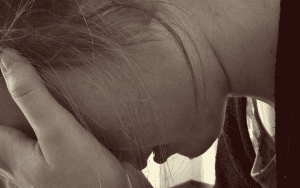

The patient, their family, and the treating experts make up the therapeutic team in many therapy schemes. By working together as a unit, the family gains a measure of control and empowerment.
The team gets together frequently to talk about starting therapy, making adjustments, and when to stop. When all parties involved are “on the same page” during treatment, it makes a huge difference.
Keeping Faith Alive and Thriving
Sexual assault is one of the few issues that can make a family feel completely helpless. The foundation of hope is a trust in humanity and its potential for growth and improvement.
Most therapy programs are based on the assumption that sexual abuse can be eliminated from a household with the right amount of support and effort. A family’s hope that they are ending the cycle of abuse might motivate them to make positive changes.
Therapeutic Procedures
Most sexual abuse treatment programs for families consist of the following steps:
Step One: Establishing the Foundation for Alteration. In the first phase, an environment of security and optimism is established. The family vows to make the necessary adjustments.
To diagnose the issue and settle on appropriate treatment objectives, therapists and patients work together to form a therapeutic alliance. Professionals and patients collaborate to create a comprehensive treatment plan.
The second phase involves questioning established norms and developing novel solutions. Problematic ideas, emotions, and routines that are no longer serving the family are imaginatively challenged so that room may be made for more flexible, healthful options.
The family’s strengths are taken into account while crafting therapeutic approaches. Members of the family might choose to attend group, individual, family, or couple sessions during Stage 2. Consolidation occurs in the next Stage.
3. At this point, the family is working to ensure that the beneficial, adaptive changes they’ve made will last. To prevent additional abuse in their lives and the lives of future generations, the family makes plans for the future and discusses how to continue to make adaptive choices.
Reparative Justice vs. Punitive Justice
The importance of family intervention and whether or not a family may be reunited is one of the most contentious contrasts between the conventional child advocate and systemic methods of addressing child sexual abuse.
Punishment-based treatment plans are an example of retribution in therapy. The notion that sexually abusive conduct cannot be eliminated, the prohibition of contact between some family members during treatment, and the threat of long-term separation of children are all examples of this.
By promoting functional, non-abusive family structures, restorative therapy works to effect positive change from within the family unit. The premise is that humans are fundamentally lovely and that their inherent goodness may be revitalized to foster healthy relationships devoid of abuse and negativity.
This restoration is not synonymous with reunion but rather with the repair of healthy, non-abusive connections between people.
Factors at play here range from those at the societal level, such as a family’s exposure to a cultural norm that tacitly approves of sexuality within the family, to those at the family level, such as extreme enmeshment leading to social isolation, to those at the individual level, such as the abuser’s specific paraphilia.
Psycho-Educational and Cognitive-Behavioral Techniques are Used.
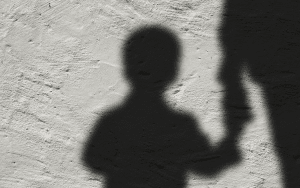

The family can learn new ways of thinking with the use of cognitive-behavioral methods. Part of this process involves replacing unproductive habits of thinking with more beneficial ones. Recovering from abuse and keeping a new way of thinking requires breaking harmful habits and impediments to good reviews.
The family may acquire new parenting skills and prevent future abuse with the support of psycho-educational practices that emphasize family communication and understanding.
The members of the family get an understanding of the repetitious and dysfunctional patterns that may characterize their family and contribute to their susceptibility to abuse.
Once they are identified, the family may learn how to break the cycle and replace it with one that is more productive. This method is taught in both individual and family/group therapy sessions.
Interventions Based on Strengths and Solutions
Interventions based on a focus on family strengths emphasize those qualities. Interventions that use a “solution-focused” approach look at the family as a whole and figure out how they might do more of the things that are working effectively.
Both methods assume that families have innate wisdom about what will help their children the most, and they encourage families to collaborate with therapists to set realistic goals.
Instead of being reduced to “labels” like “offender” or “victim,” families and their members are regarded as the capable, multifaceted humans they are. Most therapies use a resilience and strength-based perspective. Members of the family are urged to take part in activities that both enrich their lives and keep them safe from abuse.
Therapeutic Zone of Confidence
It’s essential for a family to feel at ease throughout treatment sessions. Confidentiality inside the family and occasionally between family members is what creates a safe therapy setting.
The therapist’s attitude toward the offender’s family members should be one of unconditional acceptance. No one should make the parents feel responsible for the abuse.
The young victim has the right to determine when they are ready to disclose information about the incident with their parents. This exemplifies one way in which the therapist might collaborate with the kid to increase the child’s sense of agency throughout treatment.
A safe place would also be one where the family could go to treatment without fear of being approached by the offender. Both the actual sessions and the family’s records are kept in strict confidence. If the family does not feel safe, they will not be able to go forward in their therapy.
Constant and meticulous attention is paid to security. The setting of healthy limits is emphasized since it will help the victimized youngster and his or her family feel protected.
Some examples of such limitations on communication and sharing include confidentiality and the size of one’s inner circle. This safety net consists of both therapeutic interventions and the regulations established by the family.
Prevent Sexual Abuse Against My Child?
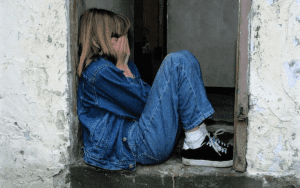

Children of many different backgrounds, cultures, and races are vulnerable to sexual abuse. While there is no way to completely prevent sexual abuse of children, there are measures that may be taken to lessen the likelihood of it happening.
Keep in mind that if something were to happen to your child, it would be the perpetrator’s fault, not yours or the child’s. Here are some measures you can take to keep the kids you care about safe.
Participate in the kid’s daily activities.
If you’re involved in a child’s life, they’ll be more likely to feel safe approaching you if they notice something is off in their own. You may take precautions to keep your child safe if you witness or hear something that worries you.
- Engage with them in conversation on mundane topics. Inquire as to their whereabouts and company during the day.
At lunch, who did they hang out with?
When they weren’t in class, what did they do for fun?
How much fun did they have?
- Meet the individuals who will be necessary to your kid. Keep tabs on your kid’s friends, both in age and in the adult world. Inquire about their classmates, the parents of their pals, and any other adults they could come into contact with, including teammates or coaches. Your child will feel more at ease talking to you about these people if you do the same.
- Take caution while selecting caretakers. Whether it’s a new babysitter, a new school, or an after-school activity, it’s essential to thoroughly vet all potential caretakers.
- Discuss the news media. Sexual assault is a common topic in the media, both in reporting on actual cases and in depicting fictional ones. Get the conversation going by asking your kiddo about this Report. Asking your child questions such as, “Have you ever heard of this happening before?” or “What would you do if you were in this situation?” might let them know that they can talk to you about these serious matters. Find out more about how to have open conversations with your kids about this sensitive topic.
- Recognize the signals of trouble. Learn the indicators of sexual abuse in children and pay attention to any changes in your child’s behavior. You can make a significant impact in the life of a kid by intervening, whether it’s your own or someone you know.
Motivate Young People to Share Their Ideas.
When people have faith that others will listen to them and take their concerns seriously, they are more likely to speak out when they observe wrongdoing. As soon as your kids are able to put their thoughts and sentiments into words, you may begin this kind of interaction with them. If you still need to bring up these issues with your kid, don’t fret; it’s never too late to start.
- Instill in your youngster a respect for limits. Make it clear to your kid that no one, not even you or grandma, has any business touching them in a way that makes them feel bad. Remind your kid that they have complete control over their own body. Similarly, it’s crucial to teach your kids that they can’t force themselves on someone who doesn’t want to be touched.
- Instruct your kid on how to articulate physical attributes. Introduce your youngster to the concept of the body and its parts at an early age. If you teach your child to say these words, they’ll know they can talk to you whenever they’re upset. Read up on methods for broaching the subject of sexual assault with young people.
- Make yourself available. Make sure your kid has some one-on-one time with you once in a while. If your kid has any concerns or questions, or if they are being spoken to in a way that makes them feel unsafe, encourage them to talk to you. Do what you say you’re going to do if they come to you with questions or concerns.
- Don’t worry about any consequences; just reassure them. Perpetrators frequently resort to intimidation and concealment in order to silence abused children. Reassure your child on a regular basis that they can feel safe sharing anything with you. If they do come to you, keep your word and don’t make them pay for speaking out.
- Let them bring up anything else that comes to mind. Asking questions like “Did you have fun?” or “Was it a good time?” may not always get the desired responses. Open-ended inquiries like “Is there anything else you wanted to talk about?” give your youngster a chance to bring up their own thoughts and concerns.
Attorney General Says Hundreds of Children and Teens Were Abused by Catholic Clergy in Baltimore
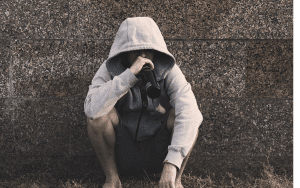

The “enormous scope and scale” of the scam was outlined in a 463-page report issued by the Maryland attorney general.
A state audit issued on Wednesday accused church leaders of decades of covering up sexual abuse committed by more than 150 Catholic priests and others linked with the Archdiocese of Baltimore against more than 600 minors over the previous 80 years.
The Maryland Attorney General’s Office has released a report that is very critical of the Archdiocese of Baltimore, the largest and oldest Roman Catholic diocese in the United States. Multiple abusers were present in certain religious institutions, such as the 11 who lived and worked at St. Mark Parish in Catonsville from 1964 to 2004.
As shocking as it is, the widespread nature of the abuse only serves to highlight the Church’s responsibility in the matter,” according to the study. The sheer volume of perpetrators and victims, the heinous nature of the perpetrators’ actions, and the regularity with which perpetrators who were already on authorities’ radar were allowed to continue victimizing minors is shocking.
The 156 adults named in this Report are suspected of abusing at least 600 children. Still, the actual figure is almost certainly much higher.
The publication of the redacted results is a significant step forward in the continuing legal struggle for their release, and it adds to mounting evidence from parishes throughout the country, where similar disclosures have already shocked the Catholic Church.
On Wednesday, the state legislature also sent the governor a measure that would remove the statute of limitations on civil claims involving abuse.
Anthony Brown, who took office as attorney general in Maryland in January, issued the Report. He briefed many victims and expressed gratitude to them for coming forward at a meeting held on Wednesday before a news conference.
A redacted version of the roughly 500-page dossier naming 156 priests and others linked with the Church who are accused of abusing more than 600 people over the past 80 years was ordered made public last month by Baltimore Circuit Court Judge Robert Taylor.
Officials have just recently started making the necessary redactions, such as blacking out the names and positions of 37 people under suspicion of wrongdoing.
During the news conference, Brown stated that the study revealed an indisputable historical record of widespread, harmful, and enduring mistreatment perpetrated by priests and other workers affiliated with the Archdiocese.
Additionally, this narrative encompasses a chronicle of recurrent efforts by the Catholic Church to conceal instances of such misconduct.
Pre-2002, the primary emphasis of the study predominantly centers around instances that transpired before the year in question until the Boston Globe revealed abuse and subsequent coverup inside the Archdiocese of Boston.
One of the initial measures upon which the Catholic bishops of the nation reached a consensus was the permanent removal of any priest from ministry upon the occurrence of even a solitary incidence of abuse.
The Report acknowledges that the Baltimore archdiocese’s internal handling of reported abuse after 2002 was greatly improved by new national policies but that there were still flaws, such as the fact that the public list of abusers didn’t include everyone the Archdiocese knew about.
The independent review body can only do so much with the data provided by church authorities on allegations of abuse. Some suspected abusers were allowed to retire with financial support rather than be ousted.
After Brown’s successor, Brian Frosh claimed in November that the investigation was finished, it was revealed that over 100,000 pages of papers dating back to the 1940s had been reviewed.
Hundreds of victims and witnesses had been questioned. Information gathered from church leaders via grand jury subpoenas, which are secret procedures in Maryland, was not immediately made public in the Report.
He said that the Maryland legislature should have time to review the Report before it adjourns on April 10. Given that schedule, the Report was released during Holy Week, the week leading up to Easter, and the holiest in the Christian calendar since it marks the end of Lent.
A measure repealing the state’s statute of limitations was finally passed by lawmakers after several unsuccessful attempts in recent years. This session, lawmakers have returned to the topic.
Wes Moore, the governor, has stated his approval. In the state of Maryland, the statute of limitations for sexual assault claims expires at the age of 38. The legislation would make retroactive lawsuits possible and remove the statute of limitations.
According to a statement released by Baltimore Archbishop William Lori on Monday, the study “covers a period in the Archdiocese’s past when our response to allegations was woefully inadequate.” This comes despite the fact that the Archdiocese has made significant progress over the previous three decades in dealing with abuse allegations.
Taylor ordered prosecutors to remove the names of 37 individuals from the Report and instructed the attorney general to rewrite some sections to release the terms of an additional 60 individuals. In the future, the court may contemplate issuing a more comprehensive version.
The study also found that the Archdiocese did not adequately respond to reports of sexual abuse by either reporting the incidents to authorities or conducting thorough investigations to identify and expel the perpetrators from the ministry.
Prosecutors noted that there were instances in which abused people went to priests who were also abusive.
The Archdiocese of Baltimore’s response to abuse claims has been under close examination for a long time.
Cardinal William Keeler, archbishop of Baltimore for over two decades, gained a reputation for candor in 2002 when he disclosed a list of 57 priests suspected of sexual abuse at a time when the statewide breadth of misconduct was generally unknown.
But everything changed when Keeler was named in a comprehensive grand jury report from Pennsylvania. Extensive evidence of a systemic coverup was given in the 2018 report, including the practice of reassigning clergy members who had been accused of sexual misconduct to other parishes rather than facing disciplinary action.
While Keeler was bishop of Harrisburg in the 1980s, a grand jury accused him of covering up claims of sexual abuse inside the Church. After John G. Allen was defrocked and stood trial, Keeler enabled him to go to Baltimore and keep serving as a minister.
The Archdiocese changed its mind about naming a new Catholic school after Keeler, who had died the year before, not long after the findings became public.
Five key takeaways the experts found from the book that will help institutions protect children from future harm by making their welfare a priority.
The critical point to remember: There has been a lot of excellent work done to prevent sexual abuse of children, laying the groundwork for effective preventative strategies like those used in the Baltimore Archdiocese. All organizations must now make concerted efforts to put these ideas into practice.
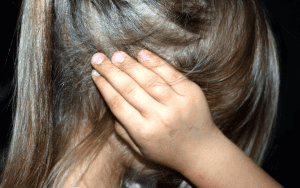

- The number of adults who sexually assault children is not well documented. However, we do know that many of these people act for reasons other than sexual attraction to children. These include contextual conditions that make abuse more likely. That’s why it’s so essential for organizations that work with young people to prioritize the health and safety of the children in their care and make that priority a part of their institutional culture.
- According to the Attorney General’s Report on child sexual abuse in the Archdiocese of Baltimore, several of the perpetrators of these crimes were in positions of trust. Increased adult-child interaction monitoring and tighter collaboration with children and parents are suggested as means of resolving this dynamic in the desk guide.
- A successful intervention to prevent future sexual abuse of children is reporting past abuse, identifying individuals who have harmed children, and holding them responsible. Eighty percent of offenders convicted of sexually abusing children never commit another sexual offense.
- Postmortem responsibility will not stop the cycle of pain and trauma that has been passed down through the generations. The Attorney General’s Report emphasizes the exponential growth in child abuse when institutions turn a blind eye and enable abusers to continue their criminal behavior without consequence. One research conducted in Germany found that the crime rate rose after offenders were transferred to new parishes. The reprimand merely served to inspire worse mistreatment. The desk reference demonstrates that a significant improvement might have been achieved with better HR policies and more rigorous review and accountability.
- The desk guide stresses the need for institutions to invest in complete child protection policies and procedures to avoid sexual abuse of children and to ensure that all interactions between adults and children are professional, caring, and adequately supervised. One organization that has shown success in doing this is the Boys and Girls Clubs of America (BGCA). In the 1980s and 1990s, the organization collaborated with an architect to construct safer environments for children. It implemented a comprehensive training program for employees and volunteers to avoid child sexual abuse. Sight lines have been meticulously plotted, and windows have been installed in every internal door of every BGCA building. Any time an adult is alone with a youngster, they may be easily observed.
When institutions, management, leadership, and coworkers provide the unifying message that no child’s safety is more important than any other, we can reduce the prevalence of sexual abuse of children. The heartbreaking Archdiocese of Baltimore report was only the latest cry for help. It’s not the final one by any means. We can, however, put an end to sexual assault on children.
FAQ’s
Does sexual abuse always include touching?
No, sexual abuse does not need physical contact or even being in the same room as the offender. Sexual abuse can occur through non-physical contact, such as through words uttered, images viewed, or covert acts performed.
Anxiety: What Is It?
Answer: Trauma is the emotional reaction to a frightening or painful situation. The phrase “No choice, no voice” often comes to mind while discussing sexual trauma. Feeling as though you have no choice except to submit to external forces or are powerless in a particular situation.
Can I get better from this?
A: Yes! You don’t have to live with the effects of trauma forever if you’ve been through anything like this. Recovering from the impact of traumatic experiences is possible with the aid of cutting-edge therapies like Eye Movement Desensitization and Reprocessing.
These modern methods reduce the time spent dwelling on the traumatic incident, allowing the patient to recuperate more quickly. A therapist equipped with these methods can significantly reduce the emotional anguish associated with reliving traumatic events. In some instances, we can help our clients without having them rehash the traumatic event over and over again.
If you are interested in more exciting stories visit blogkingworld.com


